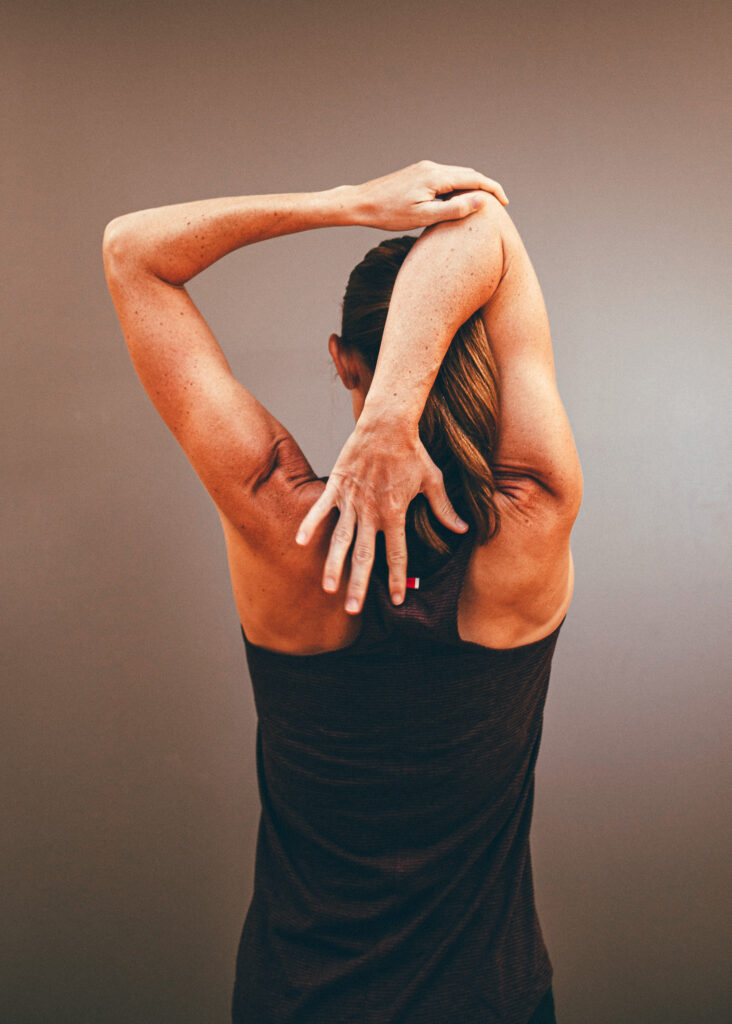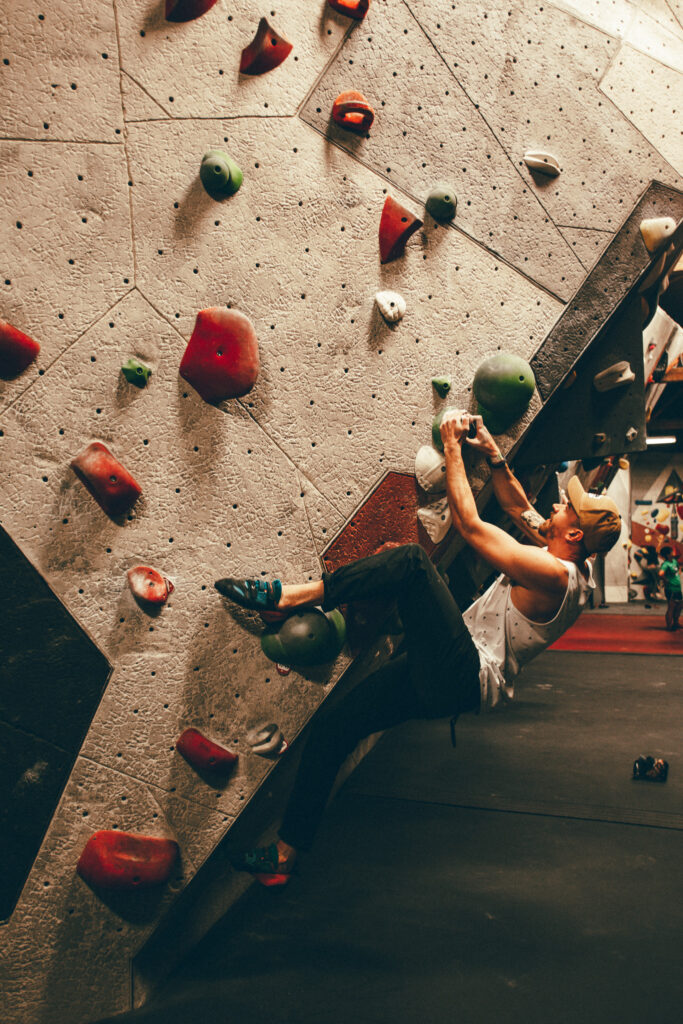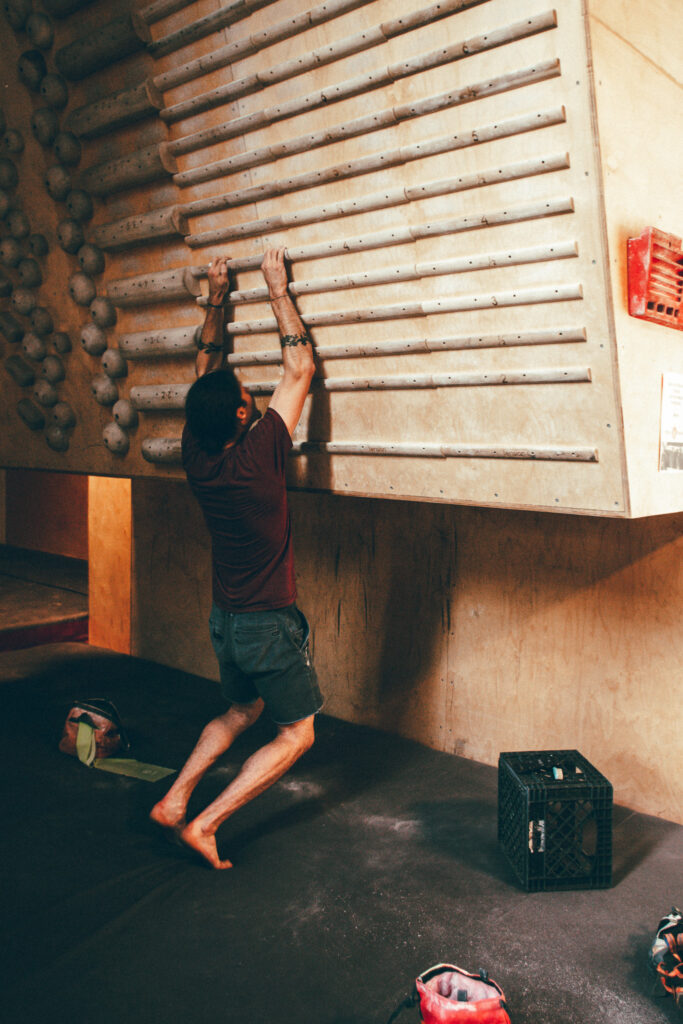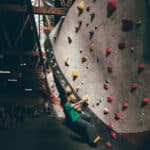Climb, Recover, Repeat . . .
Climbing is a fun, exhilarating, and challenging activity that tests both your physical and mental strength. Whether you have been climbing for a long time or are just getting started, it is important to take proper care of your body after a climbing session. Recovery is crucial for avoiding injury and ensuring that you are ready for your next adventure.
Let us explore some of the best ways to help you recover after a climbing session.

1. Hydrate:
Proper hydration is key to recovering after a climb. When you are climbing, your body sweats and loses fluids, which can lead to dehydration. Dehydration can cause fatigue, muscle cramps, and headaches, so it is important to drink plenty of water and electrolyte-rich fluids. Experts recommend drinking at least eight glasses of water per day. However, if you are exerting a lot of energy or if you are climbing in hot or humid conditions, then you will need to drink more.
2. Stretch:
Stretching is essential for preventing injury and improving flexibility. You should climb and loosen up prior to climbing. However, after a climb your muscles are likely to be tight and sore, so taking the time to stretch can help alleviate pain and speed up recovery. Focus on stretching your back, shoulders, arms, legs, and hips. Hold each stretch for at least 30 seconds.
3. Breathing Exercises:
While stretching be sure to breathe deeply and evenly to get plenty of oxygen to your muscles. Your body needs oxygen to break down glucose and create fuel for your muscles to keep going and to recover. An active body requires more oxygen. During any type of physical activity your muscles need the proper fuel to do well. When your body does not get enough oxygen, the available oxygen is converted to lactic acid instead of glucose to provide the necessary energy. Lactic acid build-up may cause your muscles to “feel the burn,” but (contrary to popular belief) it is not the cause of sore and fatigued muscles. However, it is a result of your body tapping into anaerobic metabolism. Therefore, slow and deep breathing exercises following strenuous activity helps your body recover and return to a more balanced metabolic phase.
4. Rest:
Rest is crucial for allowing your body to recover after a climb. Avoid overexerting yourself following a strenuous climbing session and give your body the time it needs to heal. Muscles need 48 to 72 hours to recuperate and repair themselves properly, especially after strength training or highly intense workouts. If you are feeling particularly sore or fatigued, take a day or two off from climbing to let your muscles recover. Overtraining and refraining from rest can lead to injury and underperformance. If you do not give your muscles and tendons enough time to recover, then they will not be fully ready for the next climbing session.
5. Eat a Balanced Diet:
Proper nutrition plays a huge role in your body’s ability to recover. Eating a balanced diet that includes plenty of protein, healthy fats, and complex carbohydrates is important for recuperating after a climb. Protein is essential for repairing and building muscle tissue, while carbohydrates provide the energy your body needs to replenish glycogen stores. Foods like lean meats, fish, whole grains, fruits, and vegetables are all great choices for post-climb meals.
6. Use Ice and Heat Therapy
Ice and heat therapy can be effective for reducing inflammation and alleviating pain after a climb. Applying ice to sore muscles can help reduce swelling and discomfort, while heat therapy can increase blood flow and promote healing. Alternating between ice and heat can be particularly effective for treating soreness and promoting recovery.

7. Take a Bath or Soak in a Hot Tub:
Taking a warm bath or soaking in the Hot Tub (if one is available) after a climb can help relax your muscles and ease soreness. Add some Epsom salt to your bath to help reduce inflammation and promote healing. Epsom salt contains magnesium, which can help alleviate muscle cramps and tension.

8. Get a Massage:
A massage can be a great way to help your muscles recover after a climb. Massage can help increase blood flow and reduce muscle tension, helping you to feel more relaxed and rejuvenated. Consider booking a deep tissue or sports massage to help target areas that are particularly sore or tight. If you do not have the opportunity to schedule a massage with a massage therapist, then give yourself a massage with a foam roller, massage gun, or a tennis ball.
9. Stay Active
While rest is important for recovery, staying active can also be beneficial. Low-impact activities like walking, yoga, (check out Vertical Endeavors Yoga & Fitness classes between climbing sessions), biking, or swimming can help improve circulation and promote healing. However, be sure to listen to your body and avoid overexerting yourself. If you are feeling particularly sore or fatigued, take a break from exercise, and focus on rest and recovery.
10. Stay Positive:
Recovery after a climb can be a slow process, and it is important to stay positive and patient. Do not get discouraged if you are not feeling 100% right away. Focus on taking care of your body, and trust that you will be ready to climb in no time.
Recovery after climbing is crucial for avoiding injury and ensuring that your mind and body are ready for your next session. Focusing on ways to recover after intense physical activity will keep you enjoying the sport and prepare you for reaching your next climbing goals.
Climbing is dangerous, it involves inherent and other risks and cannot be eliminated. The information presented here does not describe all of the risks associated with climbing and is not intended to replace or supersede expert instruction and training.
© 2023 Vertical Endeavors, Inc. All rights reserved. The contents of this article, photographs, and graphical representations are protected by U.S. and International copyright laws. Reproduction and distribution, in part or whole, without written permission from Vertical Endeavors are prohibited. The opinions and information contained in this article are for entertainment and informative purposes. They are those of the author and may not represent those of Vertical Endeavors, and do not necessarily reflect the ideas, ideologies, opinions, or points of view of the organization, affiliates, owners, stockholders, partners, suppliers, licensors or staff. Under no circumstances shall Vertical Endeavors or any entity that are, have been, or will be affiliated be liable for any indirect, incidental, consequential, special, or exemplary damages arising out of or in connection with the information contained in this article.

